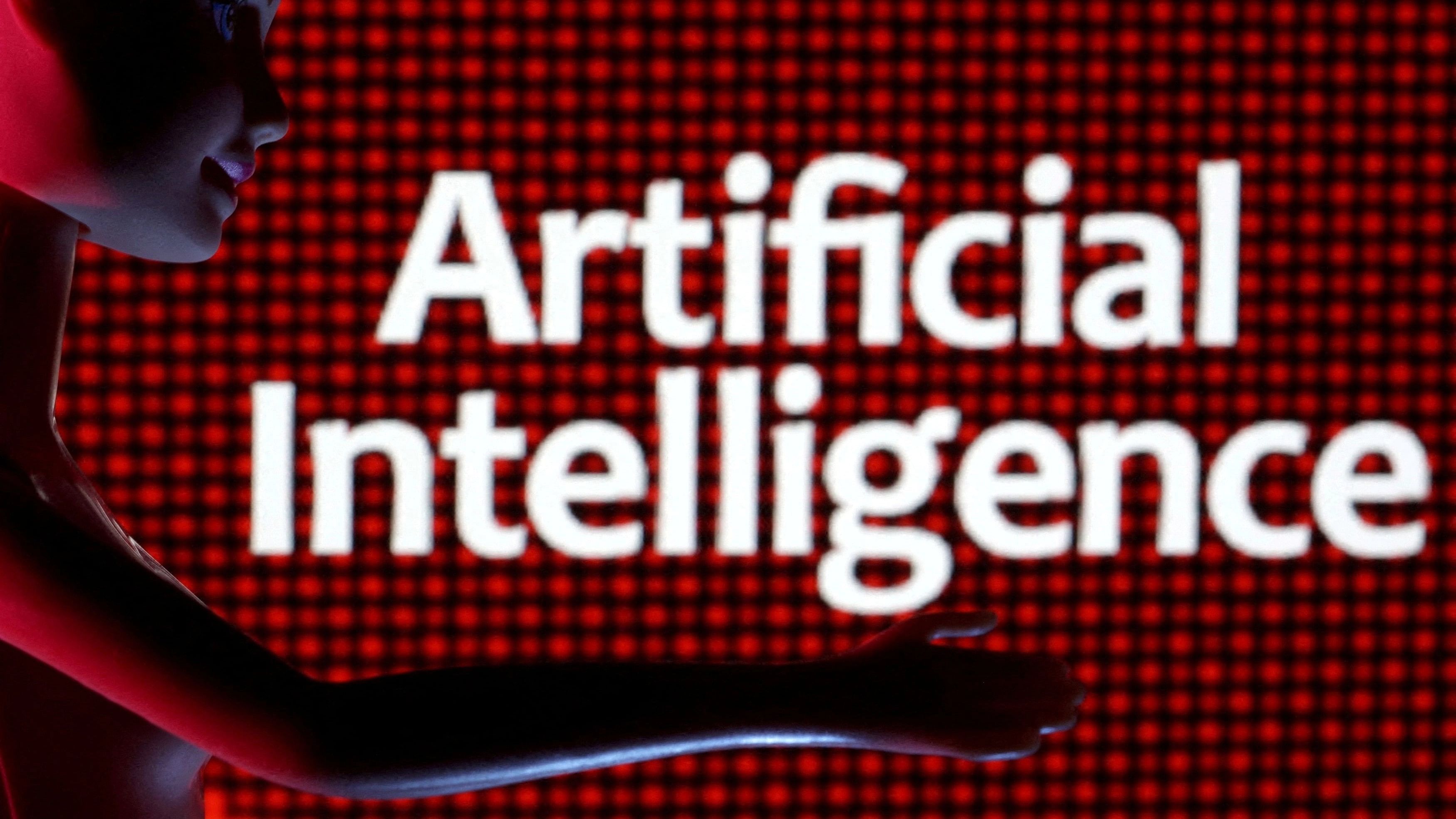
Representative image of AI.
Credit: Reuters Photo
By Dave Lee
We’ve had almost a year now to assess whether Microsoft Corp.’s plan to add ChatGPT to its Bing search engine made any difference in the great battle against Google. It will come as no surprise to learn that it didn’t — Bing’s market share in online search has barely moved.
In fact, the last time most of us even thought about Bing, let alone used it, was last February, when Microsoft Chief Executive Officer Satya Nadella was doing the media rounds, chest puffed out, talking up how the fight was truly on. “It’s a new day in search,” he told the Financial Times. Microsoft’s shares jumped 4 per cent.
Did Nadella truly believe it? I doubt it. Several months later, testifying in court as part of the antitrust case against Google, he offered a more plausible perspective: “Despite my enthusiasm that there is a new angle with AI, I worry a lot that this vicious cycle that I’m trapped in could get even more vicious.”
There’s a couple of takeaways from this. First, we should put tech CEOs under oath more often.
Second, AI functionality, even really good AI functionality, is no silver bullet that can turn around an ailing product. Customers aren’t going to flock to something suddenly enhanced with artificial intelligence, nor are they going to go out of their way to embrace new stand-alone AI tools into their life and work. Habits are hard to shake, particularly when they are locked down by additional forces, such as Google’s Rs 149,604 crore-a-year payment to Apple Inc. to ensure it is the default option on the iPhone.
People generally don’t bother adding more tech to their day unless compelled, either by profoundly enormous benefit or the need to make a paycheck. That applies even if you’re the most talked about tech product in a decade: Visits to ChatGPT through OpenAI’s own site have fallen from a peak of Rs 14,960 crore in May 2023 to about Rs 12,467 crore in December, according to data from SimilarWeb.
OpenAI’s recently launched GPT Store, where users and companies can create and share customized bots, might bring some much needed everyday utility. If 2023 was about discovering AI’s potential, 2024 will be about finding its purpose. Investors would be smart to pay attention to where deft sprinklings of AI are being applied to products people already use.
If AI chatbots are to take off anywhere, for instance, it will more likely be within Meta Platforms Inc.’s WhatsApp, or Apple’s iMessage, where billions of people are already talking. The potential of generative AI for images and video will (in the near term at least) be most effectively monetized as part of already established professional tools like Adobe Photoshop (though Adobe has warned it will take a while before it sees drastic revenue growth from this). AI-enhanced shopping is more likely to supercharge platforms like Amazon or TikTok rather then breed new competitors.
Barely a dent.
Credits: Bloomberg Photo.
The same will be true of hardware. We’re in the early stages of an AI gadget gold rush, a scramble to create the first compelling AI-centric device. The star of this year’s CES trade show was the Rabbit R1, a nicely designed stand-alone device containing an AI-powered assistant. There’s also the supposed smartphone replacement Humane Pin, designed by a couple of former Apple employees, and some less ambitious efforts like the Rewind Pendant, which stores and analyzes conversations. All have been good at establishing the “what” but not the “why.” Consumers might well warm to some of the functionality on offer — but they’ll want it on their smartphones, the thing they already have.
If you want to see where AI hardware is really going, pay more attention to things like Samsung’s recent Galaxy smartphone launch, with its well-received AI integrations, and any new moves from Apple. Indeed, the iPhone’s dominance means that Apple can afford to be behind the AI curve, as it seems to be, just as Google has been slower than Bing to bring AI to its search engine.
This isn’t to say the benefits of AI will fall only into the pockets of the tech giants. I’ve been impressed, for example, with the integration of AI into productivity app Notion — I use it to automatically categorize the many articles I save day to day, scraping the text for important coming dates and prompting me to add it to my calendar. That’s the kind of thing that hits both my “enormous benefit” and “need to earn a paycheck” criteria I discussed earlier.
Fortunately for Nadella, and the investors that have ridden the AI optimism wave to put Microsoft neck-and-neck with Apple as the most valuable publicly traded company in America, there are plenty of other products on the company’s books that meet my criteria, too. Last week, Microsoft finally rolled out optional paid-for AI functionality to all users of its Office suite: a helping hand in creating Word documents, styling Powerpoint presentations and drafting emails in Outlook.
Analysts think that alone could could generate Rs 83,117 crore in additional annual revenue by 2026, assuming Microsoft can convince enough customers that the AI upgrades are worth the cost. It won’t be difficult. Selling Bing may have been a tall order, but selling AI that can summarize the contents of long email threads between co-workers? Take my money.